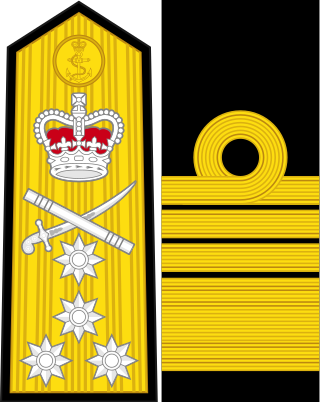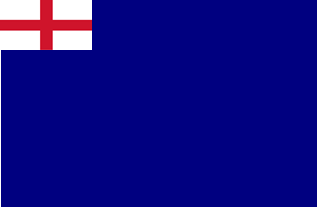Admiralty courts, also known as maritime courts, are courts exercising jurisdiction over all maritime contracts, torts, injuries, and offences.

The confederation of Cinque Ports is a historic group of coastal towns in south-east England – predominantly in Kent and Sussex, with one outlier (Brightlingsea) in Essex. The name is Old French, meaning "five harbours", and alludes to the original five members. At its peak in the Late Middle Ages, the confederation included over 40 members. There are now a total of 14 members: five "head ports", two "ancient towns" and seven "limbs".

The Lord Warden of the Cinque Ports is a ceremonial official in the United Kingdom. The post dates from at least the 12th century, when the title was Keeper of the Coast, but may be older. The Lord Warden was originally in charge of the Cinque Ports, a group of five port towns on the southeast coast of England that was formed to collectively supply ships for The Crown in the absence at the time of a formal navy. Today the role is a sinecure and an honorary title, and fourteen towns belong to the Cinque Ports confederation. The title is one of the higher honours bestowed by the Sovereign; it has often been held by members of the Royal Family or prime ministers, especially those who have been influential in defending Britain at times of war.
Sir Robert de Herle was an English military commander who was Admiral of all the Fleets about England and Lord Warden of the Cinque Ports during the mid-14th century.
Walerand Teutonicus was a Lord Warden of the Cinque Ports during the thirteenth century.

The Royal Scots Navy was the navy of the Kingdom of Scotland from its origins in the Middle Ages until its merger with the Kingdom of England's Royal Navy per the Acts of Union 1707. There are mentions in Medieval records of fleets commanded by Scottish kings in the twelfth and thirteenth centuries. King Robert I developed naval power to counter the English in the Wars of Independence (1296–1328). The build up of naval capacity continued after the establishment of Scottish independence. In the late fourteenth century, naval warfare with England was conducted largely by hired Scots, Flemish and French merchantmen and privateers. King James I took a greater interest in naval power, establishing a shipbuilding yard at Leith and probably creating the office of Lord High Admiral.

Admiral is a senior rank of the Royal Navy, which equates to the NATO rank code OF-9, outranked only by the rank of admiral of the fleet. Royal Navy officers holding the ranks of rear admiral, vice admiral and admiral of the fleet are sometimes considered generically to be admirals. The rank of admiral is currently the highest rank to which a serving officer in the Royal Navy can be promoted, admiral of the fleet being in abeyance except for honorary promotions of retired officers and members of the Royal Family.

William of Wrotham or William de Wrotham was a medieval English royal administrator and clergyman. Although a late 13th-century source says that William held a royal office under King Henry II of England, the first contemporary reference to William is in 1197, when he became responsible for, among other things, the royal tin mines. He also held ecclesiastical office, eventually becoming Archdeacon of Taunton, and served King John of England as an administrator of ecclesiastical lands and a collector of taxes.

The Cinque Ports Fleet was the a temporary formation of ships supplied to the crown from the Confederation of the Cinque Ports for particular naval expeditions during particular campaigns of the Kingdom of England from 1260 to 1558.

The Admiralty and Marine Affairs Office (1546–1707), previously known as the Admiralty Office (1414–1546), was a government department of the Kingdom of England, responsible for the Royal Navy. First established in 1414 when the offices of the separate Admiral of the North and West were abolished and their functions unified under a single centralised command, it was headed by the Lord High Admiral of England. The department existed until 1707 when England and Scotland united to form the Kingdom of Great Britain, after which it was known as the British Admiralty.

The Clerk of the Acts, originally known as the Keeper of the King's Ports and Galleys, was a civilian officer in the Royal Navy and a principal member of the Navy Board. The office was created by King Charles II in 1660 and succeeded the earlier position of Clerk of the Navy(1546 to 1660). The Clerk was responsible for the organisation of Navy Office, processing naval contracts and coordinating the administrative and secretarial side of the Navy Board's work. The post lasted until 1796, when its duties were merged with that of the Second Secretary to the Admiralty later known as the Permanent Secretary to the Admiralty.

The Admiral of the North also known as Admiral of the Northern Seas and Admiral of the Northern Fleet was a senior English Navy appointment. The Admiral was chiefly responsible for the command of the navy's fleet that operated in the North Sea and off the English coast out of Yarmouth from 1294 to 1412.

The Admiral of the West, also known as Admiral of the Western Seas or Admiral of the Western Fleet, was formerly an English Navy appointment. The postholder was chiefly responsible for the command of the English navy's fleet based at Portsmouth, which operated in the English Channel, Irish Sea and Atlantic Ocean, from 1294 to 1412.

The Admiral of the North and West or Admiral of the North and Western Fleets was a former senior appointment of the English Navy. The post holder was Commander-in-Chief of the English navy's North and Western Fleets operating in the North Sea, the English Channel, the Southern Irish Sea and Atlantic from 1364 to 1414.

The Admiral of the South also known as Admiral of the Southern Fleet was a senior English Navy appointment. The post holder was chiefly responsible for the command of the navy's fleet that operated in the English Channel out of Portsmouth from 1294 to 1326.

The Admiral of the South, North and West formally known as Admiral of the Kings Southern, Northern and Western Fleets or Admiral of all the Fleets about England was a senior English Navy appointment and Commander-in-Chief of the English Navy from 1360 to 1369.
Admiral Sir Gervase Alard, Bart. (1270–1340), was an English knight and naval commander who was appointed Admiral of the Cinque Ports Fleet and Admiral of the Western Fleet of the English Navy who served under King's Edward I, Edward II and Edward III of England from 1296 to 1340.

The Irish Squadron originally known as the Irish Fleet was a series of temporary naval formations assembled for specific military campaigns of the English Navy, the Navy Royal and later the Royal Navy from 1297 to 1731.
Admiral Sir Peter Bard was an English Knight and naval officer who held a number of important commands of the Navy Royal from 1314 to 1336. and Admiral of the West from 1314 to 1315 and again from 1338 to 1339. Vice-Admiral of the West in 1337. and Admiral of the Fleet of the Cinque Ports from 1335 to 1336.

The official history of the Royal Navy began with the establishment of the Navy Royal by Henry VIII in 1546. The modern incarnation of the institution re-emerged as the national naval force of the Kingdom of England in 1660, following the Restoration of King Charles II to the throne. However, for more than a thousand years before that there had been English naval forces varying in type and organisation. In 1707 it became the naval force of the Kingdom of Great Britain after the Union between England and Scotland which merged the English navy with the much smaller Royal Scots Navy, although the two had begun operating together from the time of the Union of the Crowns in 1603.